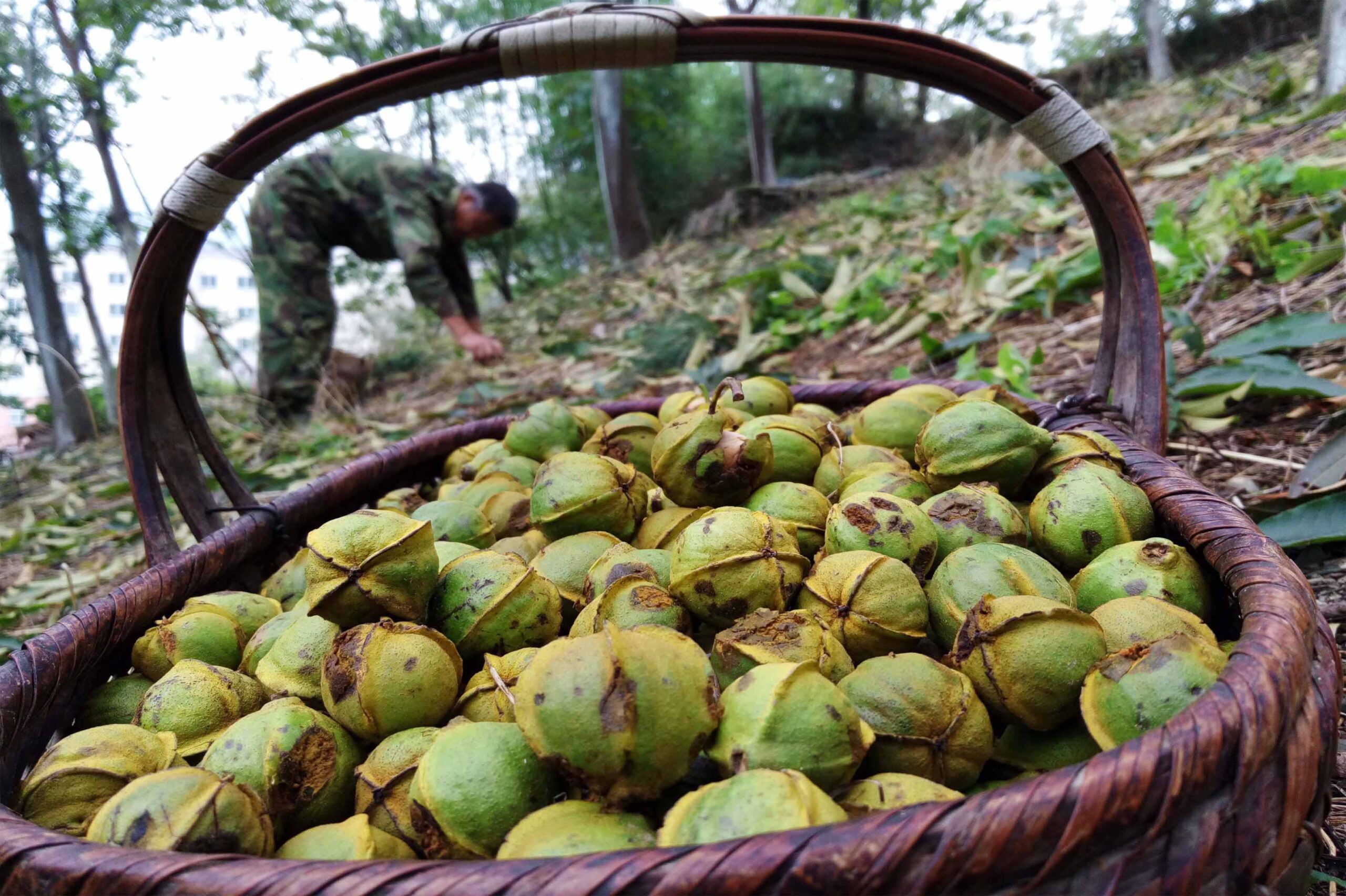Nestled in the heart of Hangzhou, the Lin'an District has earned its reputation as the epicenter of Chinese hickory nut cultivation, locally known as shanhetao (山核桃). With a rich tradition dating back over five centuries, this district has evolved into a hickory nut haven. Today, over 150,000 people are engaged in the business, perpetuating a cultural legacy that harmoniously blends ancient wisdom with modern agricultural practices.
In 2023, the Lin'an government announced a significant change in the hickory nut-picking season, mandating that shanhetao be harvested on September 8. This date aligns with the solar term known as White Dew, an integral part of the traditional Chinese calendar that divides the sun's journey into 24 segments, each assigned a particular role in agriculture. This shift is not merely a change in timing; it symbolizes the district's commitment to preserving both cultural heritage and the quality of the harvest.
Traditionally, the people of Lin'an have closely adhered to the solar terms in their cultivation and production of hickory nuts. White Dew, in particular, marks the transition from yang (hot) to yin (cool) energy in both nature and human beings. During this period, it is believed that consuming foods with hot energy properties is essential to replenish the body. Shanhetao is considered the ideal yang (hot) food, known for nourishing the organs and countering the vulnerability to illness brought about by dropping temperatures and imbalanced energy due to low humidity.
The decision to align the picking season with the solar term serves multiple purposes. Firstly, it aims to manage the market effectively, eliminating the unregulated early picking that had disrupted market stability and product quality in the past. Secondly, it seeks to promote sustainable development by encircling certain areas for reforestation, returning the land to forestry. Plucking is strictly prohibited in these designated areas, promoting the restoration of natural ecosystems. Furthermore, the local government encourages villages and farmers to report any illegal activities to the authorities, further safeguarding the hickory nut environment.
In an effort to ensure product quality, farmers are prohibited from using weed killers that can be harmful to the nuts. Instead, they are encouraged to employ hand-operated instruments for weed removal. Considering the potential risks involved, such as falling from trees during the harvest, farmers are also recommended to purchase life accident insurance, emphasizing safety alongside productivity.
Shanhetao finds its roots primarily in northern Zhejiang, with Lin'an contributing a significant 80 percent to the total hickory nut output. For centuries, these nuts have been celebrated for their exquisite taste and aromatic qualities. As autumn graces the region, the hickory nut trees prepare for a new harvest season. The first batch of nuts is expected to hit the market in late September, thanks to moderate summer rainfall and favorable conditions that have kept diseases at bay. Consequently, this year's production is anticipated to remain at an average level.
Shanhetao is undeniably more expensive than other nut varieties, primarily due to its limited output. Nevertheless, the higher price tag does little to quell the enthusiasm of consumers. These nuts continue to be a cherished snack in the Yangtze River Delta region and are prominently displayed at street stalls and online markets.
Street-roasted shanhetao has garnered particular popularity, particularly in Hangzhou. During the Chinese New Year, these nuts become a beloved gift and a staple for gatherings, often enjoyed while watching TV. The art of roasting shanhetao involves a wok, a medley of seasonings, with salt and butter being the most favored. Prior to roasting, the nuts are simmered in hot water to soften the husk and intensify their aroma. Once roasted, they are dried to perfection, delivering a satisfying crispness. Skilled artisans, some with over three decades of experience, ensure that each nut not only tastes exceptional but also looks appealing.
The journey from a fallen shanhetao to a delectable street snack involves an intricate 18-step process. Shelled shanhetao, known for their superior quality, hold a higher price due to the labor-intensive nature of their production. Hand-shelling is a key component of the process, and no machine can replicate the satisfaction of manual shelling. Cracking the hard shell with a small hammer is an art in itself, and it's believed by many connoisseurs to enhance the overall enjoyment of these exquisite nuts.
A skilled farmer, through careful hammering, can remove the entire shell without damaging the nut kernel. This meticulous process is responsible for every shelled shanhetao on the market, making them highly coveted. Each bag of shelled nuts requires a two-week processing period, contributing to their elevated cost. In recognition of this artistry and cultural significance, the 18-step shanhetao processing technique was recently added to the list of Zhejiang's Intangible Cultural Heritages.
Lin'an has witnessed the proliferation of over 250 workshops dedicated to hickory nut production, employing nearly 150,000 individuals within the industry. This centuries-old enterprise has also embraced the digital age, taking Lin'an shanhetao to every corner of the country through online platforms.
This fascinating journey of tradition, culture, and agricultural excellence encapsulates the essence of Lin'an and its beloved shanhetao. The district's commitment to preserving both heritage and quality ensures that these nuts continue to be a source of pride and delight for generations to come. In a world that continually evolves, the Lin'an hickory nut stands as a testament to the enduring power of tradition and the importance of preserving our cultural treasures.
